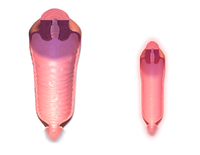
Photo from wikipedia
Pelvic fractures from high‐energy blunt force trauma can cause injury to the posterior urethra, known as pelvic fracture urethral injury, which is most commonly associated with unstable pelvic fractures. Pelvic… Click to show full abstract
Pelvic fractures from high‐energy blunt force trauma can cause injury to the posterior urethra, known as pelvic fracture urethral injury, which is most commonly associated with unstable pelvic fractures. Pelvic fracture urethral injury should be suspected if a patient with pelvic trauma has blood at the meatus and/or difficulty voiding, and retrograde urethrography should be carried out if the patient is stable. Once urethral injury is confirmed, urinary drainage should be established promptly by placement of a suprapubic tube or primary realignment of the urethra over a urethral catheter. Although pelvic fracture urethral injury is accompanied by subsequent urethral stenosis in a high rate and it has been believed that primary realignment can reduce the risk of developing urethra stenosis, it also has a risk of complicating stenosis and its clinical significance remains controversial. Once inflammation and fibrosis have stabilized (generally at least 3 months after the trauma), the optimal management for the resulting urethral stenosis is delayed urethroplasty. Delayed urethroplasty can be carried out via a perineal approach using four ancillary techniques in steps (bulbar urethral mobilization, corporal separation, inferior pubectomy and urethral rerouting). Although pelvic trauma can impair continence mechanisms, the continence after repair of pelvic fracture urethral injury is reportedly adequate. Because erectile dysfunction is frequently encountered after pelvic fracture urethral injury and most patients are young with a significant life expectancy, its appropriate management can greatly improve quality of life. In the present article, the key factors in the management of pelvic fracture urethral injury are reviewed and current topics are summarized.
Journal Title: International Journal of Urology
Year Published: 2019
Link to full text (if available)
Share on Social Media: Sign Up to like & get
recommendations!